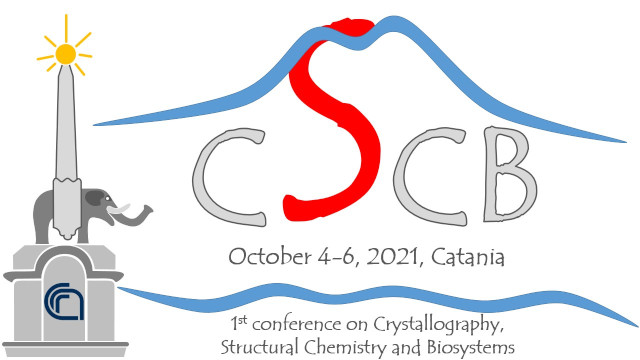Speaker
Description
Calcium phosphates (CaP) materials, employed in different biomedical applications because of their density very close to those of CaP mineralized phases of human bones, are largely investigated in many scientific fields [1]. The most known CaP are tricalcium phosphate Ca3(PO4)2 (TCP) and hydroxyapatite Ca5(PO4)3OH (HAp). In the present work, we investigated two sets of substituted β-TCP materials, coming from solid-state reactions at T = 1200°, respectively with rare earths cations (RE) [2], and with divalent transition metals (Mn, Ni, Cu) [3]. All TCP were subject to a multi-methodological crystal chemical investigation based on SEM-EDS microscopy, powder X-ray diffraction (PXRD), FTIR, Raman and luminescence spectroscopies. Investigation was completed with the structural refinement (Rietveld method). SEM morphological analyses revealed the presence of subspherical microcrystalline aggregates. Refinement of site occupancies showed the tendency of RE cations to replace Ca in the largest structural sites; in the smaller octahedral M5 site, low RE (La→Gd) are not present, contrary to high RE (Dy→Lu) present in this site, while divalent cations showed a strong tendency to occupy this energetically favourable site. FTIR and Raman spectra show slight band shifts of the phosphate modes correlated to the evolving size of the replacing element, as well as strong luminescence properties were found in many RE- TPC (Eu and Gd phases) and in Mn-TCP.
HAp is the primary mineral component of human bones and teeth. We investigated HAp, coming from high-temperature syntheses, doped with different cations at different concentrations, e.g. bismuth-HAp as possible biomaterial [4], and RE (Eu, Gd)-HAp as phosphor materials. Multi-methodological characterization was completed by dielectric measurements for Bi-HAp: morphological analysis revealed a decrease in crystallite size by bismuth-addition in HAp lattice, while the relative permittivity, dielectric loss and alternating current conductivity change with increasing frequency, the alternating conductivity gradually decreases with the addition of Bi. For (Eu, Gd)-HAp, FTIR spectra showed slight band shifts of the phosphate modes correlated to the evolving size of the replacing cation, while significant luminescence properties were found.
References
1. S. Dorozkhin. Ceram. Int. 2015, 41, 13913-13966.
2. F. Capitelli, M. Rossi, A. El Khouri, M. Elaatmani, N. Corriero, A. Sodo, G. Della Ventura, J. Rare Earths 2018, 36, 1162-1168.
3. A. Altomare, R. Rizzi, M. Rossi, A. El Khouri, M. Elaatmani, V. Paterlini, G. Della Ventura, F. Capitelli, Crystals, 2019, 9, 288.
4. A. El Khouri, A. Zegzouti, M. Elaatmani, F. Capitelli, Inorg. Chem. Commun. 2019, 110, 107568.

